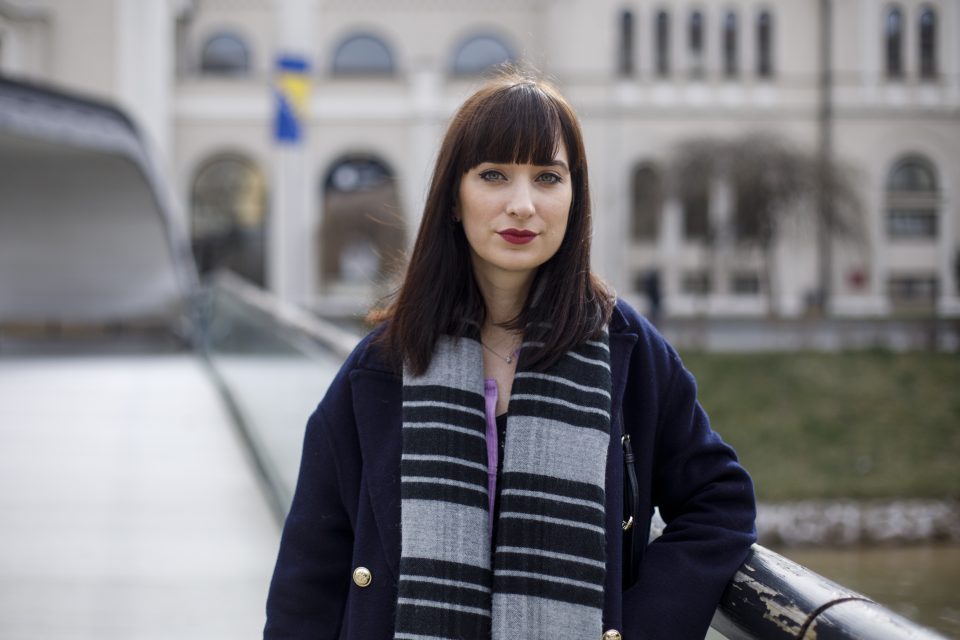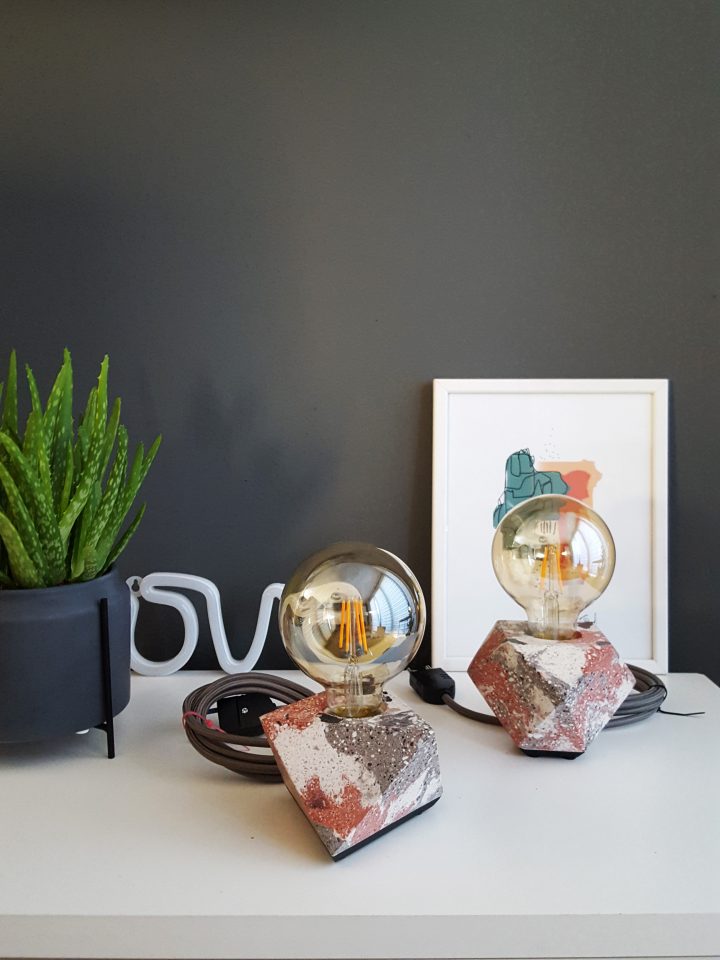
A young architect from Sarajevo, Emina Arapčić (32), has been experimenting and working with concrete for a long time. ON.design emerged in 2016 as a project to bring together and showcase her work to a wider audience.
Out of concrete, Emina makes decorative items such as flowerpots, lamps, jewelry and key rings. Among so many beautiful products, it is difficult to single out a favorite. “The concrete flowerpots of various shapes and sizes are my favorites among the products, despite them being the most demanding in their process of designing and making. Their sizes vary from small pots for cacti and succulents, to medium sizes, to in fact whatever size a customer wants,” she says.

In addition to following her intuition, she also listens to what customers are interested in, and reveals to us which pieces come out as favorites: “When it comes to customers, they will of course have discovered what they like best, and it often varies. But jewelry and small pots are generally the best-selling products.”
Emina’s pieces are beautiful but also of high quality, and the biggest proof of this is that she has customers from Berlin to Abu Dhabi. She collaborates with foreign companies One Piece Concept Store and BerlinLinie, both of whom recognized the quality and originality of her work. Although concrete is very difficult to work with, she has gained experience and expertise.
“Concrete as a material is very difficult to shape. I mostly use molds for my products, which are made from various different materials. At the beginning, I used single-use molds but over time I have worked to develop reusable ones, as they give better and more precise final results when casting concrete,” she explains.
Emina uses a number of tools to make one product, which she selects depending on the product. The most important tools for concrete casting are, of course, the mold, vibrating table, grinding machines, and tools for polishing. The final processing also requires its own variety of different tools.
“I experimented with acrylic paints for tinting the concrete. Now, for that purpose I use oxide pigments. During grinding and polishing, I coat the castings with resins that are used to protect concrete, which achieves special effects in their final texture,” she reveals.
The process of making concrete objects is very demanding and includes various stages, starting from mixing the concrete, pouring into molds, and drying, followed by a series of stages of grinding and polishing. For some products, Emina has procured silicone molds that are used to work with epoxy resins. Concrete products usually come in geometric forms of different dimensions but in order to increase the range of shapes and dimensions of her products, she has also made several types of molds herself.

“The concrete mixture (made up of sand, granular stone, cement, pigment and water) is poured into molds. After 24 hours, the piece is removed from the mold and left to dry for another 5 to 10 days, after which it is ready for grinding and polishing. The process of making concrete products is time-consuming, so it takes an average of 15-20 days to make one product,” she explains.
Although difficult to process and mostly associated with construction sites and large concrete mixers, Emina emphasizes that this is only one use of concrete. This material has been used in interiors for a very long time and combines very well with other materials. As a material, it has the advantage of not only strength, but elegance as well.

“I make a lot of my products from two or more materials, so I often combine concrete with warmer materials, such as cork, wood or wool. I want the cold material – namely, concrete – to have its impact on the soul through the texture and shape of the designed products. Every new product is a new challenge for me,” she says.
In the end, Emina says that the best recognition is when someone likes your work and wants to have it, and she encourages everyone to pursue what they love just as she has.






